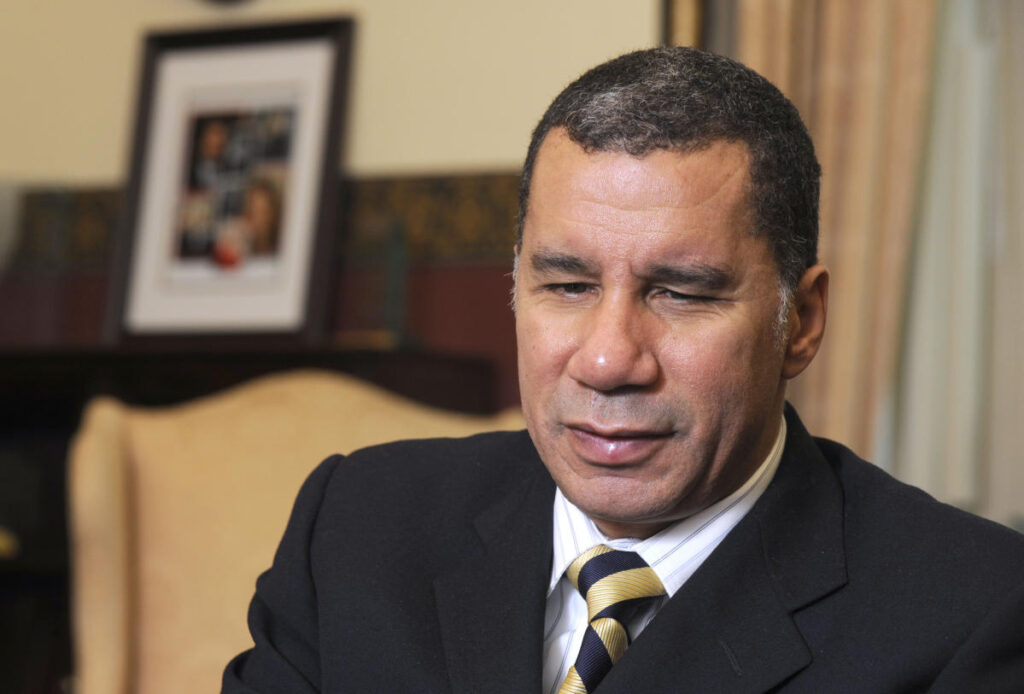Violent Assault on Former NY Governor David Paterson and His Stepson
On a recent Friday evening, former New York Governor David Paterson and his stepson, Anthony Sliwa, were victims of a violent assault in Manhattan. While the two were taking a leisurely walk on the Upper East Side around 8:30 p.m., they were confronted by a group consisting of four men and one woman who initiated an unprovoked attack. Both Paterson, who is 70 years old, and Sliwa, 20, suffered minor injuries, specifically to their faces, and received medical treatment at a nearby hospital. They were ultimately released early on Saturday, indicating that although the assault was serious, their injuries were not life-threatening.
The New York Police Department has categorized the incident as a "gang assault" and has reached out to the public for any information that could assist in their investigation. Paterson’s spokesperson noted that he also sustained minor injuries elsewhere on his body, emphasizing the physical toll this attack took despite their ability to fend off their assailants to some degree. Paterson, who is also legally blind, has faced significant challenges throughout his life, and this incident adds another layer of adversity to his narrative.
Former Governor Paterson made his way to a news conference held near the scene of the assault to shed light on what transpired. He recounted that prior to the attack, Sliwa had confronted some individuals who were climbing up a fire escape. Sliwa, thinking quickly in a protective manner, warned the group that he would call the police if they did not cease their activities. Later on, he and Paterson engaged in another encounter with the same individuals, leading to the violent escalation that left them both injured. This alarming confrontation emphasizes the nature of urban crime and the risks involved even during seemingly normal activities like walking a dog.
Paterson described how his stepson bravely fought off multiple attackers, illustrating a scenario of familial loyalty and courage amidst chaos. However, this bravery came at a price, as Sliwa sustained a cut that required stitching. The upstanding response from both Paterson and Sliwa showcases not only their resilience but also the very real dangers that can arise suddenly in urban environments. The incident mirrors broader discussions about public safety and crime in New York City, situations that continue to concern citizens and lawmakers alike.
In the aftermath of the incident, Sean Darcy, a spokesperson for Paterson, expressed gratitude for the quick response from law enforcement and the support from the community. The quick involvement of police is a vital aspect of responding to violent crimes, as timely interventions can have a significant impact on the outcomes for victims. Furthermore, Paterson’s ongoing preoccupation with the New York Mets and their playoff aspirations reflects his ability to navigate personal challenges while staying engaged with his interests and community sports culture.
While the physical wounds from the incident are minor and healing, the emotional toll of such violence can linger. Paterson is a historical figure, remembered for being the first Black governor of New York, and his resilience in the face of this assault serves to underline the ongoing conversation about safety, community responsibility, and vigilance in the city. The unfortunate experience faced by Paterson and his stepson echoes larger conversations about urban crime and safety, resonating beyond the immediate situation into broader discussions of how best to ensure public safety and to foster supportive, resilient communities in a complex urban landscape.

